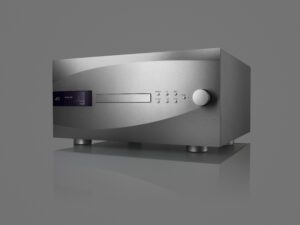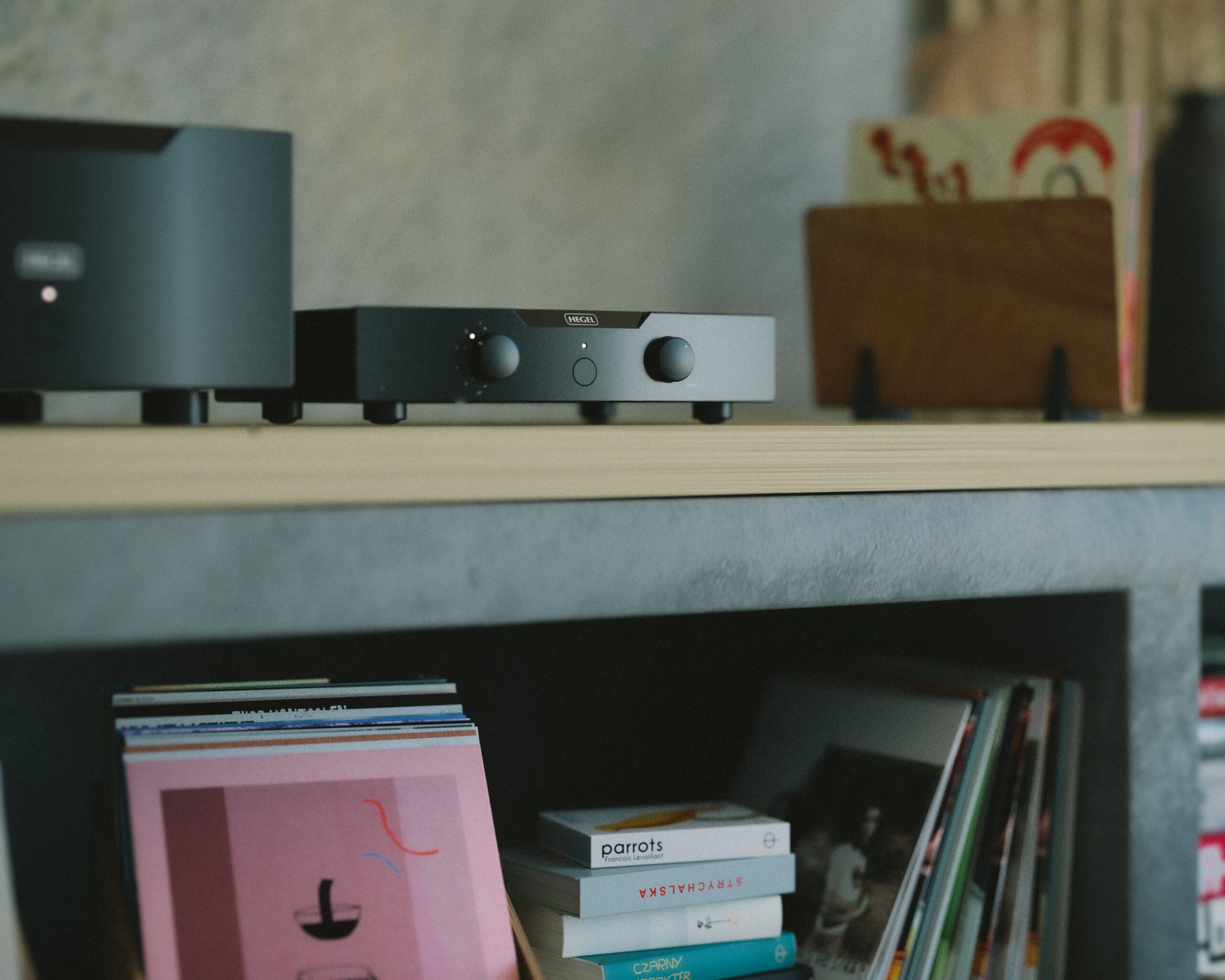
Though excellent, Hegel’s P30 preamplifier and H30 power amp looked like tired products in a very dynamic product line. They had been in production for years – the oldest models in the range by a large margin. Hegel’s integrated amplifiers, like the H390 and especially the H590, have eclipsed the original P30/H30 in performance terms. Enter the Hegel P30A/H30A preamplifier/power amplifier combination. Hierarchical order is now restored!
Hegel often features a high degree of digital implementation in its amplifiers. However, the P30A is entirely free from digital signal processing. It’s a pure analogue amplifier, as is the H30A. The P30A is one of the simplest preamps, with just one pair of FET transistors in the signal path. That isn’t just for audiophile minimalism; the fewer transistors in a circuit, the less variation they can introduce. A preamplifier is a hypersensitive analogue circuit. Minor variations in audio performance from ‘more transistors’ are minimised if fewer transistors are in the circuit. And in saying that, I’m pleased that my degree in the bleedin’ obvious can be put to good use.
Short signal paths
To make the best out of the limited number of semiconductors in the Hegel P30A/H30A preamplifier/power amplifier’s signal path, Hegel’s founder and chief engineer, Bent Holter, carefully measures and selects transistors to match them perfectly. In addition, the preamp’s internal layout is designed with the shortest possible signal paths. This significantly limits the number of components the signal passes through; just two transistors and an ultra-low noise attenuator. However, the P30A also uses Hegel’s patented SoundEngine technology. This actively monitors the music signal and corrects for intermodulation distortion using a feed-forward design.
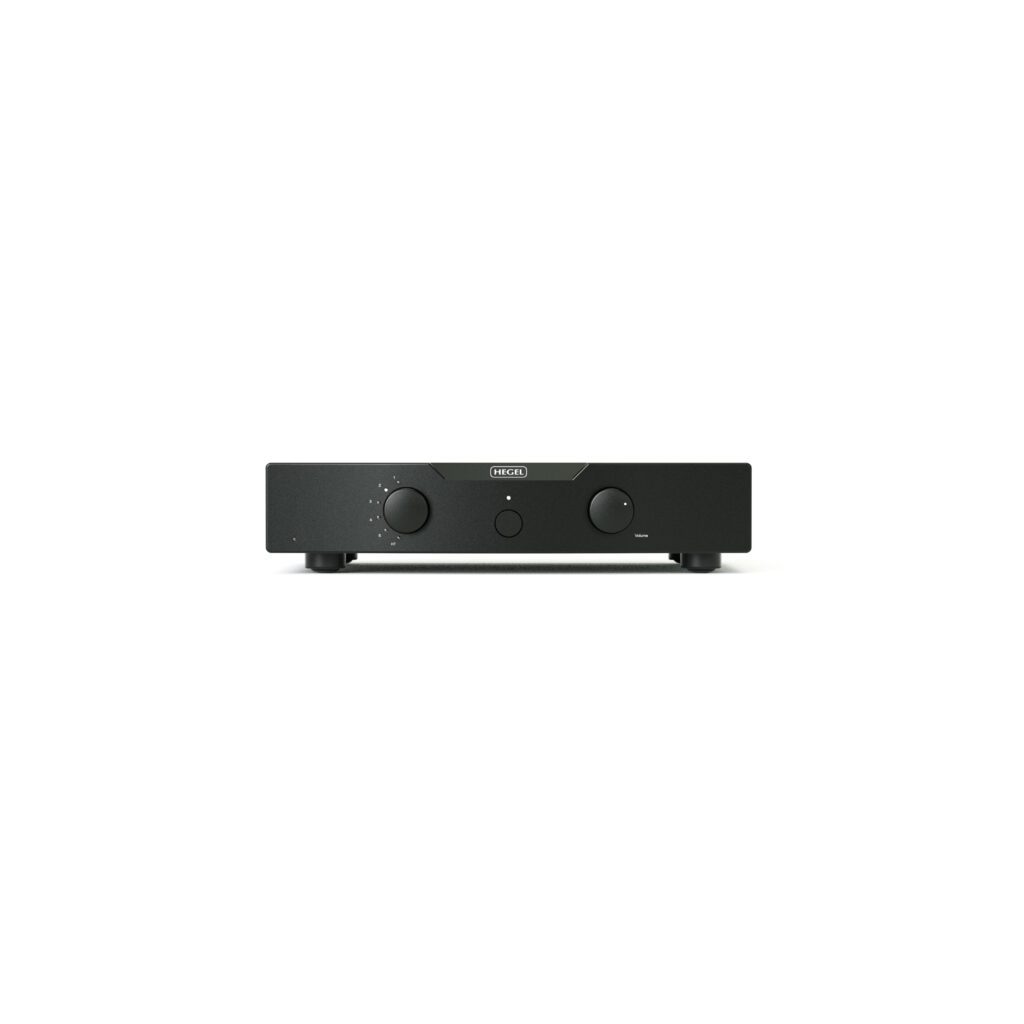
The P30A is fully balanced all the way through. This means you have two separate amplifiers, volume controls, and SoundEngine modules per channel. Balanced operation further reduces the possibility of noise distorting the signal, thereby getting closer to a notional ideal of ‘a straight wire with gain’ (except with balanced operation, it’s ‘two straight wires’, of course!). The P30A offers a wide array of inputs and outputs.
It features two balanced (XLR), three unbalanced (RCA) inputs and a fixed-level Home Theatre input. This input can also be configured to act as a regular line input. On the outputs side, the P30A includes one balanced (XLR) and two unbalanced (RCA) variable outputs that are all active, allowing you to connect several devices simultaneously. One of the unbalanced RCA outputs can even be configured as a fixed volume output. The P30A also has a 3.5mm IR-direct input and a 12V trigger output connector.
Most beefy
The H30A, meanwhile, is an ‘amplifier’ at its most beefy. In its mono state, a pair of these power amps deliver a mighty 1100 watts into an eight-ohm load, which is entirely stable even with one-ohm loads. However, it’s closer to about 350W per channel as a stereo amp. This kind of ‘healthy’ power output comes from the H30A’s use of 56 high-speed, ultra-low distortion bipolar transistors, each one a 15A 200W design. The amp’s power supply uses two separate 1,000VA toroidal transformers for fast response and reduced transformer hum. With a power bank of 270,000μF worth of capacitance, the H30A also has more than enough power in reserve.
In a large power amplifier like this, the input stage can be vulnerable to higher-order harmonic distortion acting as electrical interference to distort and undermine the music signal. This distortion is far removed from the original music frequencies and can often make the amplifier sound harsh and unmusical. The H30A’s input stage is designed to reduce this distortion’s impact by using a single pair of FETs. Once again, like the P30A, these FETs are carefully measured and selected to have identical values, and the closer their tolerance in this setting, the less possibility for the ingress of higher-order harmonic distortion. Hegel also deploys its SoundEngine circuit here.
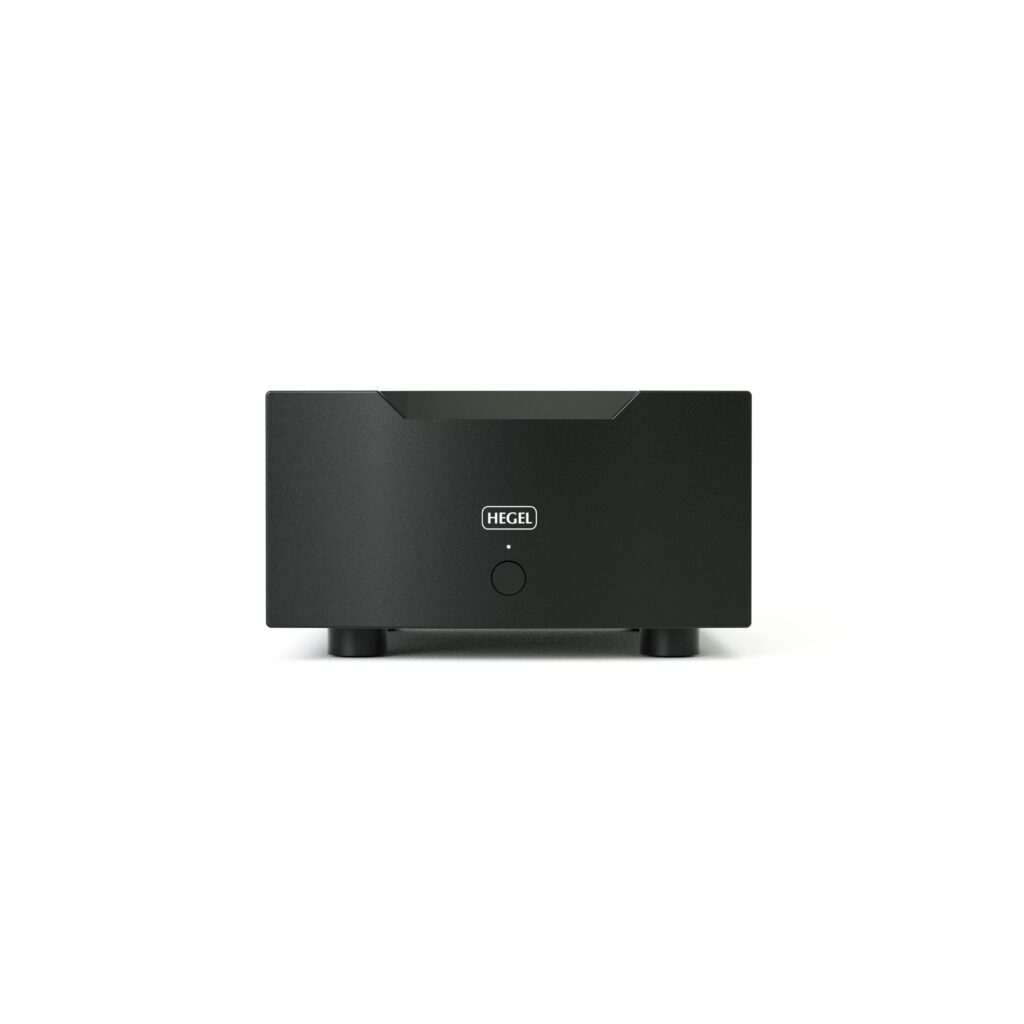
The H30A is designed as a mono power amplifier but can also be used as a stereo power amplifier. It has three sets of balanced (XLR) and unbalanced (RCA) inputs (one for mono use and a set for left and right channels) and a 12V trigger input. The H30A also features high-quality, gold-plated speaker binding posts.
Stretching the analogy
In its advertising, Hegel calls the P30A ‘The Conductor’ and the H30A ‘The Orchestra’. That’s stretching an analogy, but not as much as you might expect. ‘The Conductor’ is in perfect control of ‘The Orchestra’, and ‘The Orchestra’ has the grace and power to cope with everything. This analogy doesn’t lend itself to people who think classical music is ‘polite musical confectionery for baroque European princes’ and forget all the chair-throwing at the first recital of The Firebird Suite. The rest of us will get it and understand the Hegel P30A/H30A preamplifier/power amplifier.
We need to clarify something from the outset; although Hegel considers the H30A to be a mono amp that also does stereo, that does not make it a lacklustre stereo performer. I’d also argue that while you can consider the stereo as a stepping stone to mono, there is no sonic driving force to make you want to shift to mono. In short, it’s already in the ‘outstanding’ territory as a stereo power amplifier. In truth, I didn’t have two H30A amps to run it in mono and never felt the need to run them in mono. If you were trying to drive loudspeaker drivers made of inch-thick concrete to fill a concert hall with sound, the H30A could do with some similar-sized backup, but as it is, the stereo output is more than good enough.
My inner caveman always sees a hulking great amplifier and thinks, ‘play music loud now’, but this is so far from the point of the Hegel P30A/H30A combination. Sure, it will play at ear-modifying levels without letting go of your speaker drivers (showing this is an amp about ‘control’ rather than ‘brute force’). But it’s perhaps the preamp that should be getting all the attention.
Rarer than rare
While preamplifiers are not a rare commodity, good preamps are extremely rare… and good preamplifiers that don’t cost as much as a new Mercedes-Benz, come in a handy six-box form factor, or are seemingly designed to blow up every few days are the rarest of them all. The P30A is one of those rare delights in preamplification; it leaves the slightest footprint on the sound.
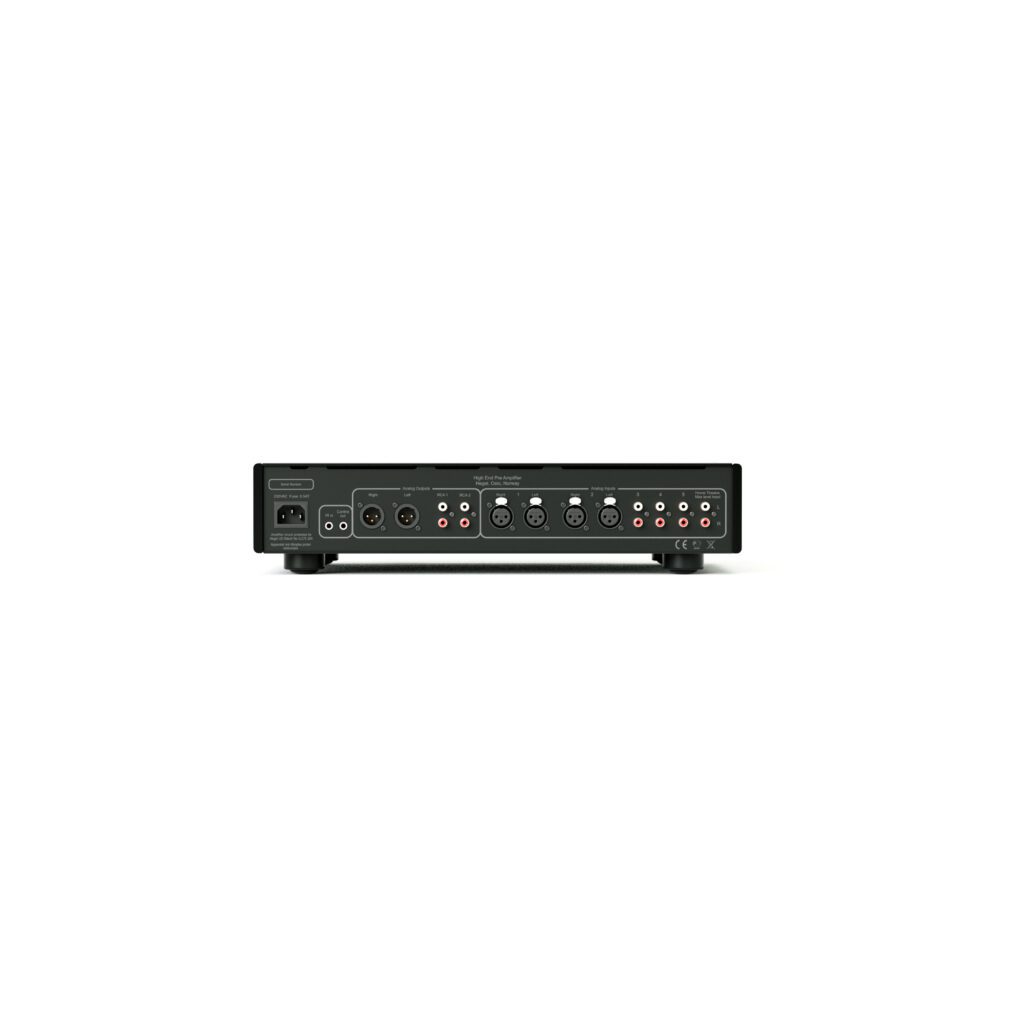
What I want from a good amplifier system is a preamp that does essentially nothing but select the source and lets me adjust the volume level and a power amplifier that takes that unsullied signal and gives it enough oomph to drive a pair of loudspeakers with enough headroom to spare. It should be capable of doing this at any volume level you choose and powerful enough to drive practically any loudspeaker with enough dynamic range to cope with everything from ppp to fff and everything in between. That shouldn’t be as tough a call as it appears, but precious few pre/power combinations can tick off more than a few of these boxes. The joy of the Hegel P30A/H30A preamplifier/power amplifier is not only does it get closer than most but that those few that do better in every setting are considerably more expensive than this Hegel duo.
Ticking those boxes
The Hegel P30A/H30A preamplifier/power amplifier ticks many boxes because of good engineering throughout. The preamp works as described, adding or removing little to the sound and letting the music do the work. Meanwhile, the power amplifier brings the motive force to power the loudspeakers with excellent control, grip and dynamic headroom, which is ultimately precisely what they should be doing. This makes the sound somewhat hard to pin down because it’s more dependent on the sound of the recording than the sound of the kit. And yet, despite that, it doesn’t show up bad recordings or is so precise that it eviscerates the music to show off the detail.
I quickly moved away from the discs I use for testing and onto the stuff I enjoy non-professionally. I’m on a bit of a New Angry British Grumble Rap tip at the moment, streaming bands like Bob Vylan ranting about inequality and the perils of cheap fried chicken and chips, all of which are surprisingly excellent but need a powerfully controlled, rhythmically outstanding and articulate system to bring out the angst. Otherwise, it just sounds like more Grime. The Hegel duo does this well and tracks like ‘Take That’ and ‘Health Is Wealth’ stand out with clarity and intensity.
There’s much more to the duo than just angry ranting, and everything you play through the Hegels is accurately portrayed. There is a hint of Hegel warmth, but like all the latest models in the line-up, just enough to make music sound more enticing and not make the system sound clinical and cold. It’s a rich sound without excess thickening, but more importantly, without excess brightness, something rare in modern solid-state designs.
Excellent soundstaging
The Hegel P30A/H30A preamplifier/power amplifier’s soundstaging is also excellent. It’s more a function of the loudspeakers and the recording than the amplifier. This means it has that wide of the speakers staging so many look for, and even has some valve-amp-like depth to the image. And of course, not only does it pass the Trentemøller test, it also ensures that everyone within a 20m radius gets to sit the same test; the level of bass depth and power on offer here is insane.
Most Hegel combos will be used with sizeable full-range loudspeaker designs. However, using them on the end of a pair of little KEF LS50 Meta just for giggles commanded more respect for the bass of these diminutive designs. There was about an extra half an octave of bottom end on offer here and held in check with the kind of control that borders on the shocking.
They had a trial separation and started seeing other amplifiers briefly. And, while they did very well apart – once again, the preamplifier, in particular, is exceptionally good, whereas the power amp is ‘merely’ excellent – there’s no reason to break the two up. They work well as a team!
Downsides, what downsides?
Are there any downsides? Aside from the sheer size and weight of the amp, not really. Sure, if you want something to show off how shiny and chrome-plated your musical tastes are, the simple lines of the Hegel duo probably won’t do it for you. If you want a preamplifier that bristles with functions and features, the minimalism of the P30A might leave you wanting a balance control. But, where it counts – in the sound quality department – the Hegel duo kicks.
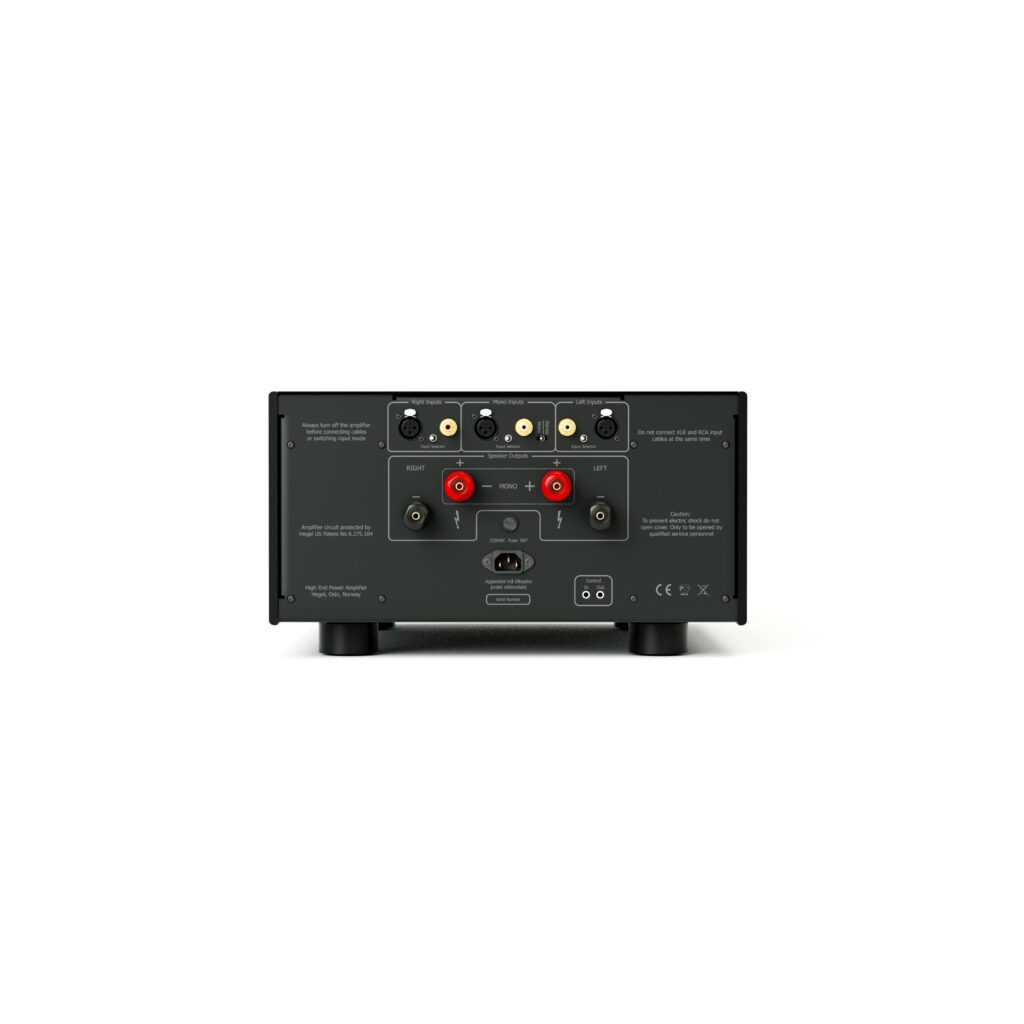
One thing is missing from the Hegel P30A/H30A preamplifier/power amplifier combination… a damn good matching DAC. Hegel released the excellent half-sized V10 phono stage, a perfect adjunct to the pre and power amp. And Hegel used to make the HD30 DAC and the Mohican CD player. Both would be ideal additions to the mix. But, right now, there is no standalone digital device from Hegel. That needs to change. Note: Hegel has recently teased The Viking CD player, with a style to match the P30A/H30A.
DAC notwithstanding, Hegel’s current line-up has to be one of the strongest in audio. It has a range of excellent amplifiers that improve the more you spend on them. Its first phono stage was an excellent product that combined outstanding performance without a silly-money price tag. The P30A preamp and H30A power amp extend that product range into the high-end. And – like so many products in Hegel’s range – if you were to try to find better, you’d ultimately spend a fortune to get there. There would be no guarantee of success too. What a pair of stellar performers!
Technical specifications
P30A
- Type Line preamplifier
- Remote control Volume, source, and mute
- Inputs 2 × XLR balanced, 3 × RCA unbalanced and Home Theatre inputs
- Outputs 1 × XLR balanced and 2 × RCA unbalanced outputs
- Other connections 3,5mm IR-direct jack, 3,5 mm jack 12V trigger output
- Signal to noise ratio More than 130 dB balanced mode
- Crosstalk Less than -100 dB
- Distortion Less than 0.005 %
- Intermodulation Less than 0.01% (19kHz+20kHz)
- Finish Black
- Dimensions(H×W×D) 9.6 × 43 × 30cm
- Weight 7.2kg
- Price £7,000
H30A
- Type Mono/stereo power amplifier
- Output power More than 1100 W in 8 ohms (mono)
- Min. load impedance 1 ohm load
- Inputs RCA unbalanced and XLR balanced
- Speaker outputs One pair of heavy duty gold plated terminals
- Input impedance Balanced 20 kohm, unbalanced 10 kohm
- Signal to noise ratio More than 100 dB
- Crosstalk Less than -100 dB
- Distortion Less than 0.003% at 100 W in 8 ohm
- Intermodulation Less than 0.01% (19 kHz + 20 kHz)
- Damping factor More than 500 (mono)
- Power supply 2000 VA dual mono, 270,000 μF capacitors
- Output stage 56 pcs 15 A 200 W high speed, ultra-low distortion bipolar transistors
- Power consumption 120 W in idle mode
- Finish Black
- Dimensions (H×W×D) 24 × 43 × 57.5cm
- Weight 47.4kg
- Price £17,000
Manufacturer
Hegel
UK distributor
Auden Distribution
+44(0)7917 685759
By Alan Sircom
More articles from this authorRead Next From Review
See all
PrimaLuna EVO 100 phono preamplifier
- Apr 22, 2024

Reiki Audio SuperSwitch Master Pro + Servant Pro
- Mar 27, 2024

Melco Audio N1-S38 music server
- Mar 27, 2024








